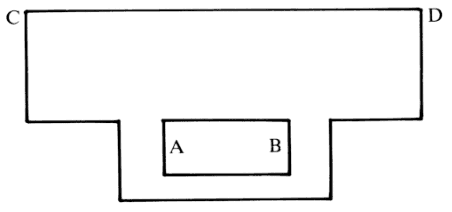3. The Writing on the Wall (Daniel 5)
Attention needs to be given to the disturbed
historical order of some of the main chapters in Daniel. Their chronological
order is, strictly, 7,8,5,9,6,10-12.
There is still a good deal of argument about the
dramatis personae in ch. 5— Belshazzar, the queen, and
Darius especially.
The sequence of Babylonian rulers is now fairly
well settled:
Nebuchadnezzar’s long reign (44 years?) was
followed by the brief rule of his son Evil-Merodach (2 years). Neriglissar,
Nebuchadnezzar’s son-in-law, followed but not for long. Then a boy-king
Laborosoarchod was a mere 9 year-old, who was speedily got rid of by Nabonidus,
the high priest of the temple in Haran.
At the time that Daniel 5 begins, Nabonidus was
with his army out in the country, either hoping to stop Persian invasion or else
anxious not to get he shut up in an indefensible city. So his son Belshazzar was
acting king in Babylon and inclined to enjoy the opportunities that were now
his! Legal documents of the 12th and 13th years of Nabonidus mention Belshazzar
as crown-prince.
It was probably the anniversary of the capture of
Jerusalem in Zedekiah’s reign (so says the Talmud), which sparked off the
idea of indulging in some good anti-Semitic gloating at a special celebration.
All the glorious holy vessels, the seven branched candlestick included, were
brought out, and the great concourse of lords and “ladies” settled
down to a self-congratulatory orgy of hard drinking.
Would not the gods who had granted such success
against the Jews be reminded of their obligation to grant a similar glorious
victory over the Persians? Was this “praising of the gods of gold and
silver” the origin of the futile modern practice of drinking
toasts?
Alas, this “godliness” worked in
reverse. Cyrus, knowing what was afoot, was content to wait outside
Babylon’s defensive inefficiency.
That very banqueting hall has been disinterred
from the rubble by the archeologists.

A B: the royal recess, the king’s
table.
C D: was a wall of white gypsum, its quality
still traceable. Probably much of it was covered with a record of past national
exploits. And there were massive doors of cedar wood.
It was in this setting that a hand began to write
on the wall. The experience turned Belshazzar to soberness and terror within a
minute. His countenance (literally, “his brightness”, for he was
‘lit up’) changed as speedily as Herodias’s Herod. “His
loins were loosed” (diarrhoea?)
There was a frantic call for the professional
interpreters of portents. But these men knew better than to speak plainly what
they suspected the meaning to be (they were probably in conspiracy with the
Persians already). So they played for safety, and pleaded ignorance.
Nebuchadnezzar would have seen through them.
“I must know”, Belshazzar insisted.
And in the nick of time help came from Nitocris, the queen. Originally the wife
of Nebuchadnezzar, she had been taken as consort (for diplomatic reasons) by
Nabonidus. This queen-mother, not so fuddled as the rest, bethought her of
Daniel, who at this time was probably in retirement (8:27). “He can shew
hard sentences” — Daniel’s study of the Scriptures had been
noted.
The prophet’s response to the king’s
blandishments and promises was curt enough (v.22, 23; contrast 4:19). With a
warning about Nebuchadnezzar’s experience, he proceeded to the meaning of
the revelation. The Babylonians believed in the existence of
Bel-Merodach’s “Book of Fate”, and were probably thinking
about this now.
MENE: the days of your kingdom are
numbered. For special emphasis this warning was
repeated.
TEKEL (the word is related to the Hebrew
Shekel): your person and your policies are weighed with unerring divine
judgment; you are found wanting.
PERES (the word was deliberately used to
suggest “Persians”; but it is closely associated with a familiar
Hebrew word for “broken down” or “break in”, which is
precisely what was to happen that night. But why the strange
variant?
UPHARSIN? The prefix is simply the Aramaic
conjunction for “and”; and the additional end syllable is the form
of the plural—in this case an intensive plural; it will certainly happen,
and the division of the kingdom will be ruinous.
It was!
